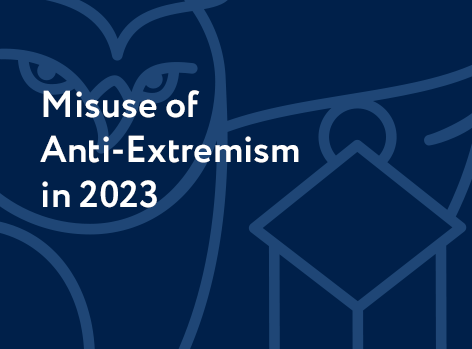In November 2010, 5 people were dead and at least 8 injured in racist and neo-Nazi attacks (in November 2009, 5 people were dead and 27 injured). In all, from the beginning of 2010, 35 people in Russia were dead and at least 297 injured in such attacks.
In November, incidents of violence were recorded in Moscow and Moscow region (3 dead, 3 injured), St. Petersburg and Leningrad region (1 dead, 1 injured), Volgograd region (1 dead), Bashkortostan (2 injured), Blagoveshchensk and Novosibirsk (1 injured in each). In all, from the beginning of the year incidents of racist violence have been recorded in 44 Russian regions.
From the beginning of the year and up to now, Moscow and the region (17 dead, 113 injured), St. Petersburg and Leningrad region (2 dead, 43 injured), and Nizhny Novgorod (3 dead, 16 injured) face the highest level of violence. The number of victims in other cities is no more than 10.
Individuals from Central Asia remain to be the target in the majority of attacks (14 dead, 62 injured).
In November, not many objects were attacked by vandals who could be guided
by hate or Neo-Nazi ideology. Those were a Muslim cemetery in the Nizhny
Novgorod region, Jehovah’s Witnesses’ house of worship in Irkutsk region, a
statue of Lenin in Orel region, and several pieces of architecture in St.
Petersburg (including Peter Klodt’s famous ‘Horse Tamers’ on the Anichkov
Bridge). In all, from the beginning of 2010, at least 86 vandal attacks
occurred that were inspired by religious hate or other xenophobic motives.
In November 2010, neo-Nazi terror rose again; in Primorye, a case was
opened on planning an attempt against the officer who investigated local
racists’ crimes. In the end of October and in November, campaigns were
organized to bully prosecutors and judges involved in neo-Nazis’ cases in St.
Petersburg and Moscow (Vassily Krivets’ case and ‘National
Socialism/White Power’ (NS/WP) nationalist organization case). St.
Petersburg neo-Nazis claimed responsibility for mining railway lines near
St. Petersburg on November 13 and a series of messages on the alleged
mining of various public places on the eve of the Police Day (November 10).
The most significant public event organized by the ultra-right was the annual Russian March that took place on November 4. The action turned out to set record both in number of participants in Moscow (nearly 5,500 marchers) and in its range throughout the country. Processions, demonstrations, crucessions, and picketing under the sign of the Russian March took place in at least 29 Russian cities.
The most successful of ultra-right groups’ recent attempts to develop an ethnic conflict out of an everyday incident after ‘Kondopoga scenario’ was made in the town of Khotkovo near Moscow. A man was dead due to a street fight between natives of Central Asia and local citizens (the former are already charged with hate crime). The incident provoked a series of protests including those under xenophobic slogans on the part of Khotkovo citizens, as it had happened in such cases before. Employers had to evacuate migrant workers from the town. Meanwhile, ultra-right organizations go on disseminating rumors on ‘the small town near Moscow terrorized by migrants’.
In November 2010, at least 3 guilty verdicts were issued for racist hate crimes in Voronezh, Nizhny Novgorod, and Samara. 8 people were convicted; 2 of them escaped punishment because of the expiry of the period of limitation, and 4 more received suspended sentences without any supplementary sanctions.
In all, from the beginning of the year, at least 77 guilty verdicts have been issued for racist violence. 264 people were convicted; 93 of them escaped punishment due to the expiry of the period of limitation or received suspended sentences without any supplementary sanctions.
In November 2010, 3 sentences were passed for xenophobic propaganda. 5 people were convicted in Kirov, Khabarovsk, and Syktyvkar; all of them received suspended sentences without any supplementary sanctions.
In all, from the beginning of the year, guilty verdicts for hate incitement (article 282) have been issued in 50 trials; 60 people were convicted, 30 of them received suspended sentences; we have no information about the court decision on the case of one of the convicts. In 5 trials, 5 people were convicted for public calls for extremist activity (article 280); all of them got suspended sentences. In 6 trials, 9 people were convicted under the sum of articles 282 and 280; 4 of them were given suspended sentences and 2 more escaped punishment because of the expiry of the period of limitation.
In November, a guilty verdict under article 214 part 2 of the Criminal Code (hate vandalism) was issued for defiling a statue of Lenin. The vandal was sentenced to imprisonment.
In all, from the beginning of 2010, 4 guilty verdicts have been issued for ideological acts of vandalism. 5 people were convicted; 2 of them received suspended sentences.
In November, the Federal List of Extremist Materials was updated three times (on November 1, 13, and 18) and grew from 706 to 727 items. This time again, the additions are not out of doubt. Among the new items, there are complete xenophobic texts as well as separate comments from forums. As of December 1, four of the 727 items are withdrawn from the list with numbering maintained; 32 items are put in the list on inappropriate grounds because the court rulings blacklisting those materials as extremist were cancelled, and 47 materials are included in it twice (the same materials with different output data, such as the text ‘You’ve Elected – You Should Judge’ (‘Ty izbral – tebe sudit’’) included in the list thrice, are not counted).
On November 13, 2010, the Federal List of Extremist Organizations was updated. Items 16 (international religious unity ‘Takfir wal-Hijra’ banned by the Supreme Court on September 15, 2010) and 17 (Krasnodar city organization ‘Pit Bull’ deemed extremist by Oktyabrsky district court of Krasnodar on August 24, 2010) were included.
Thus, as of December 1, 2010 the list contains 17 organizations whose activity is banned by courts and can be prosecuted for under article 282-2 of the Criminal Code (arranging activity of an extremist organization).
In the field of inappropriate enforcement of anti-extremist legislation, the trends of misuse remain the same. Still, criminal and administrative prosecution of adherents of new religious groups such as scientologists, Jehovah’s Witnesses, Said Nursi’s followers, etc., goes on, National Bolshevik Party (NBP) activists are under persecution, and officials continue to imitate and overstate counter-extremist activity by imposing sanctions on libraries and schools.


